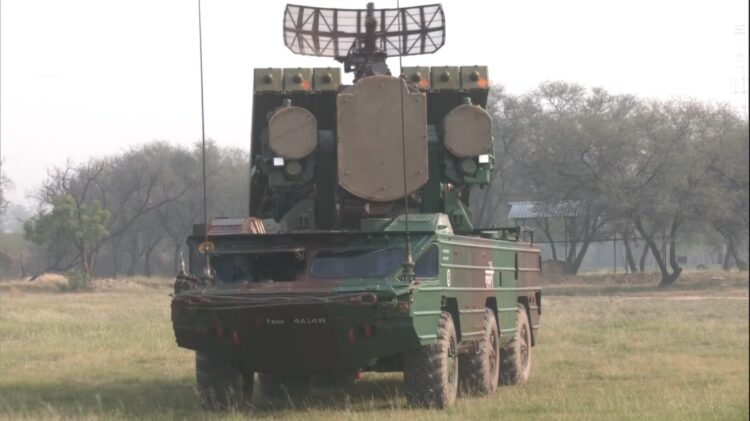The Indian armed forces protected many cities of the country’s border states during the recent struggle with Pakistan, with drone attacks and other types of air strikes, which were stopped and destroyed before the cause of destruction in civil establishments. During this time, the air defense system would also prevent the Golden Temple in Amritsar from being targeted.
Air defense systems of the Indian Army have played an important role in thwarting Pakistan’s audacity. The army on Monday performed a demonstration as to show how Indian air defense systems, including Akash missile system, L-70 Air Defense Gun, saved the Golden Temple in Amritsar and the cities of Punjab from Pakistani missiles and drone attacks.
Major General Karthik C. Seshadri, GOC (General Officer Commanding) of 15 Infantry Division, said that the Indian Army was expected to target military establishments as well as civil establishments from Pakistan here, including religious places like Golden Temple, which were the main target according to intelligence.
Major General Seshadri said, “Knowing that the Pak Army has no valid goals, we guess that they would target civil bases including Indian military establishments, religious places. The Golden Temple appeared to be the most prominent.
He said that Pakistan targeted the Golden Temple with air weapons, including drones and long -range missiles, which were “failed” by army personnel, which are ready for such situations and attacks.
Seshadri said, “On the morning of 8 May, during the dark, Pakistan launched a large number of air attacks with unmanned air weapons, mainly drones and long -range missiles. We were fully prepared because we feared it, and our brave and alert army air defense gunars thwarted the nefarious intentions of the Pakistani Army and killed all the drones and the golden temple. Even a scratch was not allowed to come to the temple. “
The GOC 15 Infantry Division explained in detail the results of the Pahalgam terror attack, which led to the operation vermilion, in which India attacked nine terrorist camps within the Pakistan border, resulting in an attack from the Pakistani side.
Major General Seshadri told ANI, “As a result of the brutal terrorist attack on the Pak Army, innocent domestic and international tourists, the anger of the nation took the form of operation vermilion under the skilled leadership, which attacked special terrorist bases. Nine Lakshyas were targeted. Seven of the nine goals were destroyed.”
Major General said that the armed forces targeted several places with “complete accuracy” during Operation Sindoor, including areas such as Muridke and Bahawalpur, where the headquarters of terrorist organizations are located.
He said, “Among these (nine) goals, Muridka near Lahore is the headquarters of Lashkar-e-Taiba and also the headquarters of Jaish-e-Mohammed (JEM) in Bahawalpur, which was attacked with full accuracy. Soon after the attacks, we issued a statement to deliberately targeted a Pakistani military or civilian infrastructure.”
India’s air defense systems proved their potential at the peak of tension between the two neighbors, harassing many drones, missiles, micro UAVs and moving weapons, which emerged globally as a worthy defense asset.










